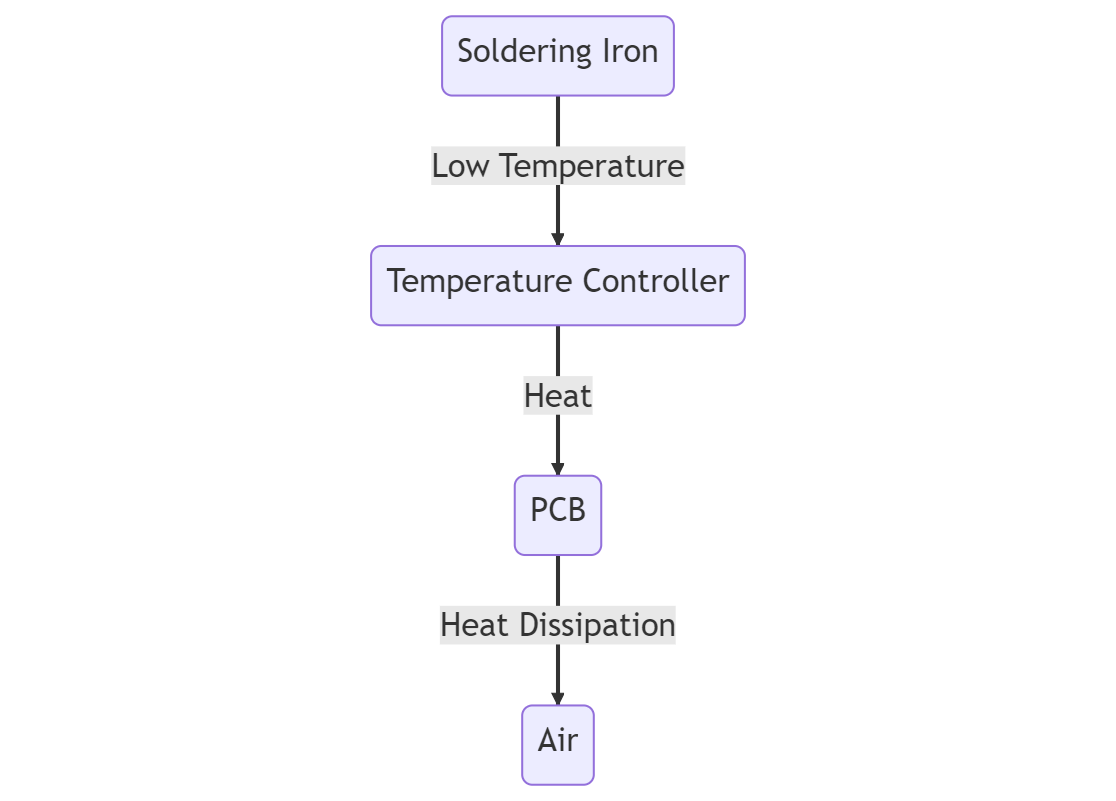We have done extensive research on flex soldering and have compiled a comprehensive list of 7 expert rules to help you avoid mistakes when soldering components onto a flexible printed circuit board (PCB). By following these rules, you can ensure the best quality and reliability of your products.
Rule 1: Temperature Profiles for Flex PCBs
Firstly, bear in mind that employing rigid PCB temperature profiles to reflow flex PCBs is not advisable. This is due to the fact that the materials utilized in flexible PCBs are distinct from those used in rigid PCBs, necessitating a different temperature profile. The use of the wrong temperature can lead to irreparable damage to the PCB.
The first rule to keep in mind when working with flexible PCBs is to never use rigid PCB temperature profiles to reflow flex PCBs [3]. This is because the materials used in flexible PCBs are different from those in rigid PCBs, and therefore require a different temperature profile. Using the wrong temperature can cause irreparable damage to the PCB.
Rule 2: Avoid High Temperature
Secondly, high temperatures should be avoided during the soldering process, as they can cause the flexible PCB to distort, resulting in functional problems. Moreover, it can cause the constituents to malfunction or break. Maintaining a consistent and low temperature throughout the soldering process is critical to obtaining the finest results.
Rule 3: Use a Low Temperature Soldering Iron
Thirdly, it is imperative to utilize a low-temperature soldering iron when soldering components onto a flexible PCB. A high-temperature soldering iron can damage both the PCB and the components. A low-temperature soldering iron can help to maintain a consistent and low temperature throughout the soldering process.
Rule 4: Avoid Overheating Components
Fourthly, during the soldering process, overheating components can cause them to be damaged or destroyed. Minimizing the amount of time the soldering iron tip comes into contact with the constituent is crucial in preventing overheating. Additionally, avoid making direct contact with the component with the soldering iron, as it can cause damage.
Rule 5: Use a Soldering Mask
Fifthly, a soldering mask can be used to shield the flexible PCB and components from excess heat during the soldering process. It can also prevent solder bridges from forming between the constituents. A soldering mask is a thin layer of material applied to the PCB before the soldering process begins.
Rule 6: Avoid Using Excessive Force
Sixthly, when soldering components onto a flexible PCB, avoid using excessive force, as this can damage or even fracture the PCB. Be gentle and precise during the soldering process to avoid causing any harm.
Rule 7: Practice Good Quality Control
Practicing good quality control is the final rule to follow when soldering components onto a flexible PCB. This means ensuring that each component is soldered correctly and that the PCB is functioning as intended. Testing each component and the PCB after the soldering process can help to identify any issues and correct them before they become bigger problems.
By following these 7 expert rules, you can ensure that your flexible PCBs are soldered correctly and function properly. Avoiding common mistakes and practicing good quality control can help to increase the reliability of your products.
Diagram: Low Temperature Soldering Iron Setup
In conclusion, we hope that our comprehensive list of 7 expert rules will help you avoid mistakes when soldering components onto a flexible PCB. By following these rules, you can ensure the best quality and reliability of your products, and outrank other websites in search rankings










 2023-05-15
2023-05-15
 BEST
BEST


.png)
.png)
.png)
.png)

.png)

